
A website devoted to demonstrating the outstanding natural beauty and lifestyle of Northumberland, Northern England and Newcastle.............
Once more the North Yorkshire Railways held a fantastic Gala day, but this time exclusively for Steam.
For the first time ever the NRM ( National Railways Museum ) sent the fantastic Britannia Class locomotive Oliver Cromwell along. Which was one of the best locomotives I have seen running, truly an awesome sight. Along with Black 5's, GWR Tank engines, Midland compound engines to name but a few.
The weather on the Saturday was good but windy, but Sunday was a perfect day for it as you will see by the pictures.
So please enjoy the shots of the engines, I hope you get as much pleasure out of them as I have done taking them.
Paul
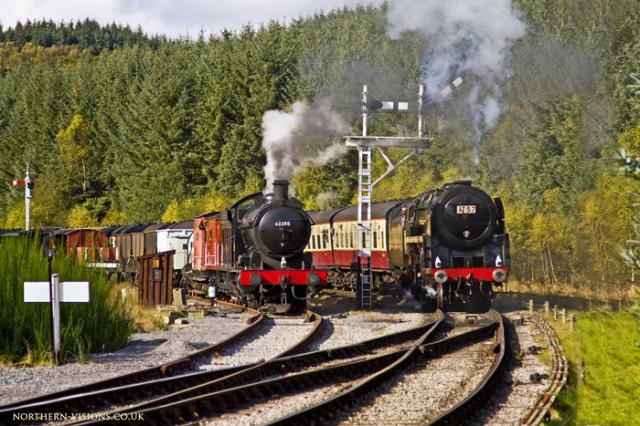
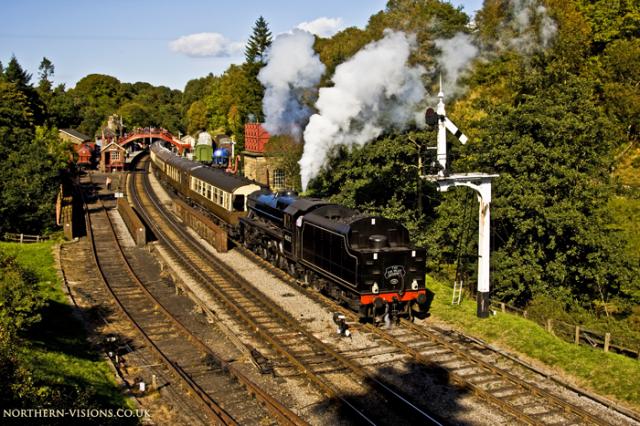
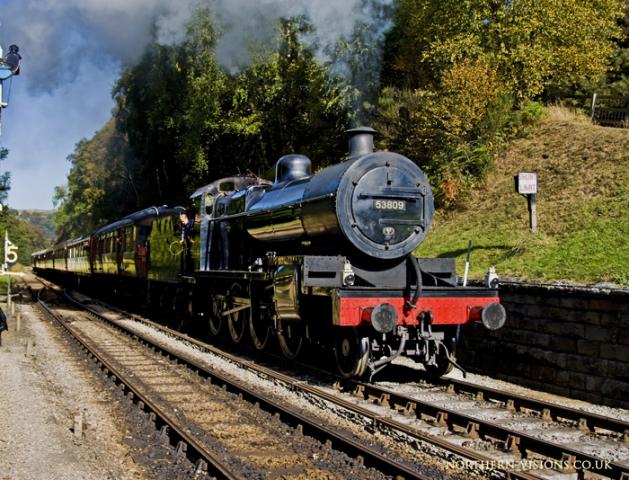
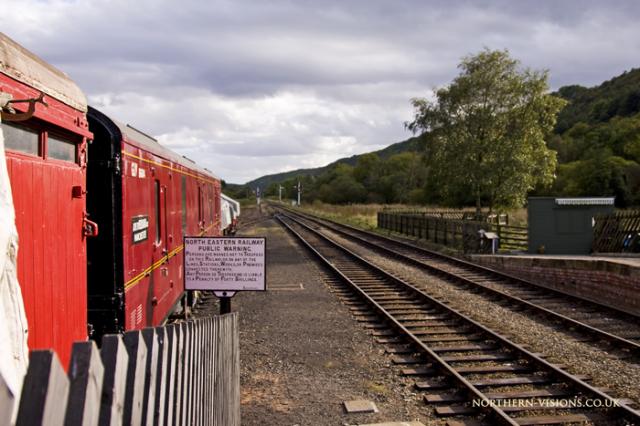

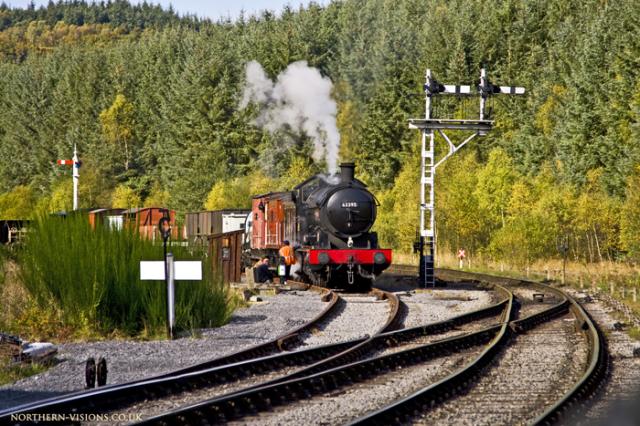
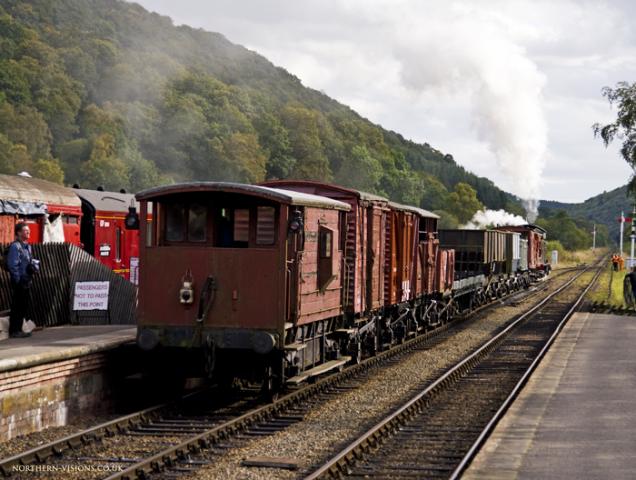
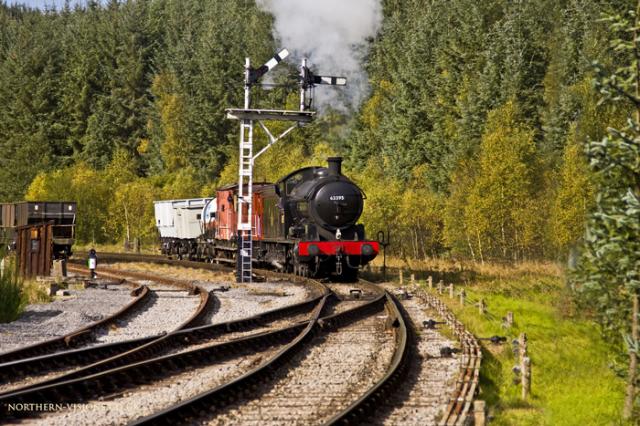

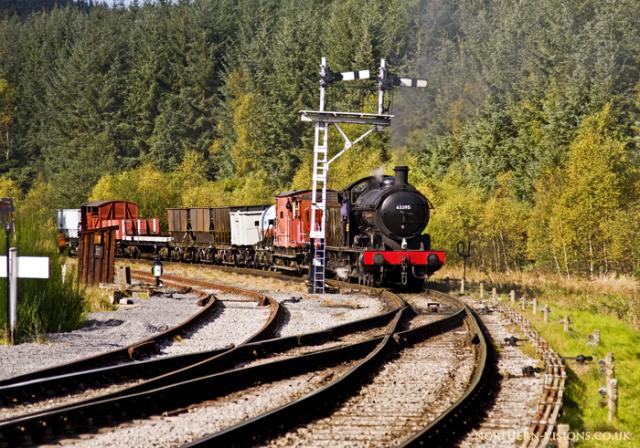
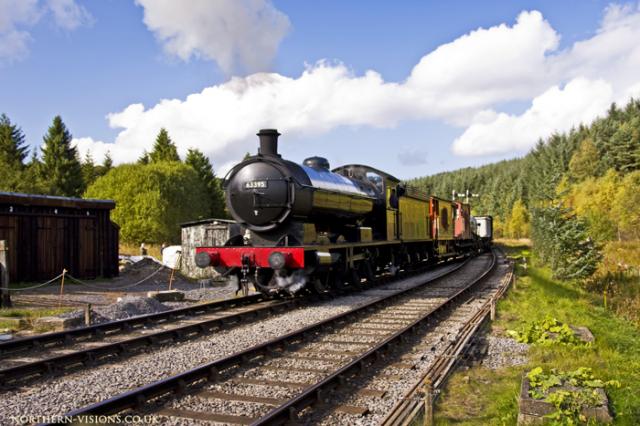
Now here is something I have not seen on the NYMR in a long time. A representation of an old fashioned mixed goods train. In the early to mid 20th Century, branch and rural lines were the only source of goods to come in and out of towns and villages.
Everything from food to furniture was transported on the railways in those days, as there was not a road network as we know it today. That's why if you look next time you are at a station, especially an old fashioned station like Hexham etc, you will see a goods shed.
You cant miss them, they look like large sheds with an oval hole in both ends and a loading dock stuck on the front.
So all year round these trains would run up and down from a main freight terminus, and out to local branches. in more rural locals, they would contain thinks like Milk, Cattle, horses or anything else the Railway company could charge for.
So on the theme of Freight, the NYMR have put on a display of "Shunting". Now for all you non railway bods, shunting is one of those jobs on the railway which would have been an every day thing, but vital.
In this case NER Class Q6 0-8-0 No. 63395 takes up the role.
Basically a mixed goods train like this one, would have to at some point leave a goods van or tanker
behind in a yard, or even just swap the cars around. Easy job you think, well yes but it is more like a puzzle than anything else.
As you can see here he has started with a full train of trucks, and by a number of movements, has managed to swap the entire train around so the Brake van appears at the other end of the train, and therefore the train is mixed up.
I know sounds rather dull, maybe it is and its just us!? But for some reason to which I have not managed to fathom out, I watched this going on for a good 50 minutes or so, and to be honest it was very good practice for taking shots of moving trains.
So that is my excuse anyway!
He has just moved into the station, swapped tracks and is coming back out.
Moving past me back into the station again.
Back to where he came from and has coupled up the last of the Trucks and Brake van.
All done and off down the line.
A mixed goods locomotuive put in its place by the mighty Britania Class Locomotive "Oliver Cromwell".
The workhorse of the National Networks in the latter days of steam, the Black 5.
This time moving out tender first from Goathland.
I don't know how much 40 shillings is in today's money, but I bet back then it was enough to make trespassers on the railways think twice!
maybe they should still be charging on the NYMR, it may keep the idiots without line side passes off the lines!
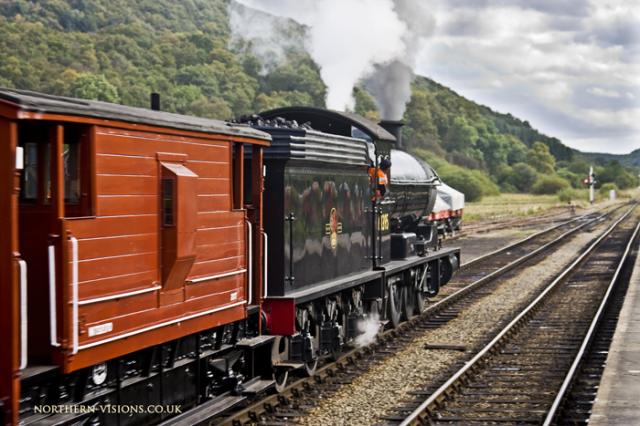
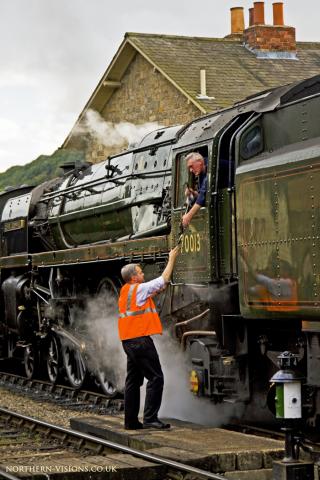
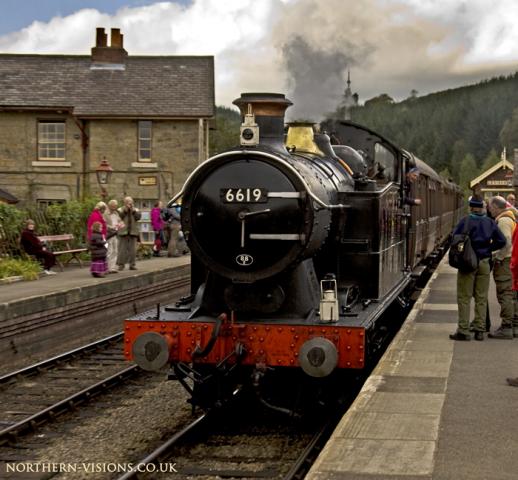
The Line token being handed over for the Driver to proceed back along the line to Goathland. This shot gives you a pretty good scale of how big the Britannia Class locomotives actually were.
Not something that you see on the LNER Network very often. a GWR Tank Engine. In particular GWR 56XX Class 0-6-2t No. 6619.
Now some in the past and present call the Great Western Railway Gods Wonderful Railway. Now I think the Castle and Manor engines were one of the best, if not arguably the best around, but I cant buy into them being the definitive railway.
But I think this goes back to the fact of wherever you are from, you have a pride and interest in the railways that came from your particular part of the world.